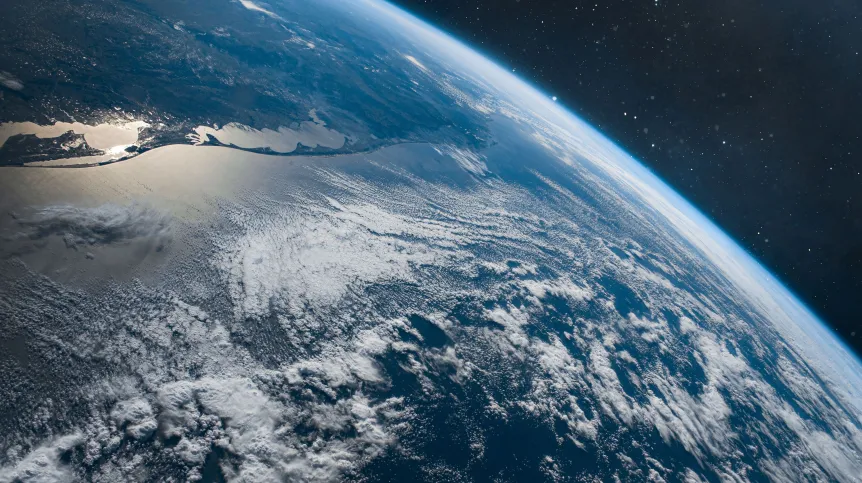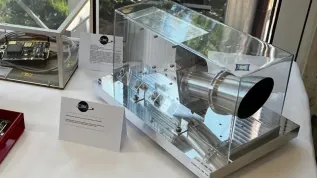
Students at the Warsaw University of Technology are working on the third nanosatellite PW-Sat3, whose task will be to test the proprietary drive that enables efficient deorbitation and manoeuvres in orbit. The launch is planned for autumn 2025. The work was delayed due to the pandemic and lack of stable financing.
The students have already sent two satellites into space. In February 2012, the first Polish artificial satellite PW-Sat was launched into orbit. Its mission was continued by PW-Sat2, launched in 2018.
For several years now, members of the Students Space Associationat the Faculty of Power and Aeronautical Engineering of Warsaw University of Technology have been working on another satellite - PW-Sat3. It was originally scheduled to be launched into space in 2024, but its launch was postponed to autumn 2025.
PW-Sat3 is a CubeSat satellite. To a large extent, it will continue the tasks of previous Warsaw University of Technology satellites. It is intended to test solutions useful in the fight against the problem of space debris, i.e. satellites that remain in orbit after completing their mission and fragments of damaged objects. They threaten other active satellites (because they can no longer be controlled), but also, for example, astronauts on the International Space Station. Even PW-Sat2, which is just a nanosatellite, was at risk of collision during its 20-day mission. Such situations occur much more frequently in the case of larger satellites.
'The goal of our mission is to test the Warm Gas drive, which will allow us to deorbit the satellite. The satellite control algorithm prepared by our team is also very important. Thanks to it, we will be able to perform several manoeuvres in the orbit, change it, which will help us avoid space debris, among other things', says Jakub Murawski, the PW-Sat3 project sponsoring and promotion team leader. Previous Warsaw University of Technology student satellites tested other methods of rapid deorbitation, such as deorbitation tail and a sail.
PW-Sat3 will also have a camera for Earth imaging and a horizon sensor that will make it possible to determine the satellite's position in space. It will also be larger than its predecessors, measuring 10x10x30 cm, and will be possible to communicate with it via radio. 'As in the case of PW-Sat2, we want our satellite to make a contribution to the development of the radio amateur community around the world. We plan to make data from the transponder and/or the possibility of downloading additional data publicly available', Murawski says.
He explains that the Warm Gas engine heats the gas before firing and generating thrust. This can be done in many ways. He points out that such solutions are known around the world. 'Various deorbitation methods and different types of satellite drives, including ours, are defined on NASA's website. However, looking at the CubeSat market, very few satellites have drives', he adds.
Moreover - as he points out - the described propulsion systems and deorbitation methods are defined generally. 'Even if a company uses a specific solution, we do not have access to these technologies, knowledge and documentation that are trade secrets. We have to reach a given solution ourselves, in our own way. In this way, we educate engineering staff who will have unique experience and we supply the Polish space industry with qualified staff', says Murawski.
He adds that the prospects for a satellite launch this year were largely hampered by the COVID-19 pandemic, which delayed the work. 'The second important reason for the postponement of the launch date is the lack of full financing. We are supported by the Faculty, the Warsaw University of Technology, the Ministry of Science and Higher Education. However, we also have to apply for grants and look for sponsors ourselves. The cost of building a satellite of this size together with the launch is approximately PLN 1.5 million. The launch alone is PLN 0.5 million. We still need between PLN 800,000 and more than a million to complete the project, depending on the solutions we use. These are large amounts for students', he says.
'Insufficient and irregular financing means that when we develop a component, we cannot test it, and the rest of the project has to wait. Sometimes we also do not know how to design a given component because we do not know what we will be able to afford later', he points out.
The first student satellite from the Warsaw University of Technology was also the first Polish artificial satellite in space. Its task was to test flexible photovoltaic cells and the deorbitation system. However, during the mission there were problems with power supply and communication with the satellite. The planned experiment with releasing the deorbitation tail was not carried out. The satellite deorbited in October 2014.
PW-Sat2 continued its mission. It was launched from California (USA) in early December 2018. It was carried into orbit by a SpaceX Falcon 9 rocket. The main task of the satellite was to test deorbitation technology using an opening sail. The idea was to find a way to quickly removed a no longer operational satellite from orbit. The mission was a success. In early 2021, as planned, it completed the mission of testing a deorbiting sail that shortened the satellite's orbital time from over 20 years to 813 days. In addition, it took thousands of photos, including the first Polish satellite photo, and collected a lot of data. (PAP)
PAP - Science in Poland, Ewelina Krajczyńska-Wujec
ekr/ agt/ amac/ kap/
tr. RL













